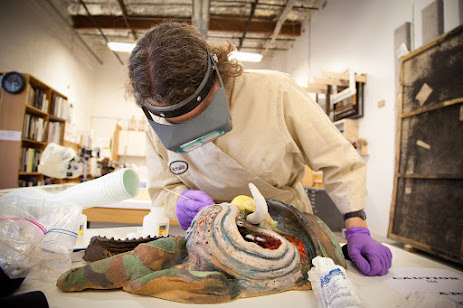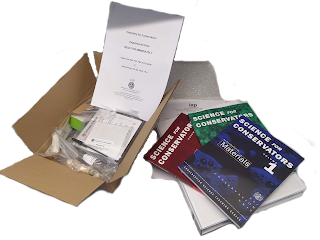I'm going to digitise my family's entire slide collection. Why? I love collections work!
'Playing with old stuff' is why I started working in museums and it's still pretty much my favourite museum thing, except for the one job where we had Cheeky Chocolate Finger Thursday.
My current job is in project management, which is great (I swear rollercoasters ain't a patch on the rush of hearing one of your funding bids has been successful. No, honestly), but recently I've been having major pangs to dive back into a collection. Trouble is, this being 2020, access to my museum's store has been off-limits for most of the year. What to do?
Ah-ha!
Sorting out my parents' loft in the run-up to Christmas I came across the family photographs - of which there are, well, a few. Thousand.
These are the transparencies. The negatives are elsewhere. And equally plentiful.
I've managed digitising projects in past museums and it seemed like a sensible idea to apply these skillz to the domestic collection and get scanning! There were three key motivating factors at work.
1. I'd seen plenty of these photos as a child when we'd set the projector up and have a proper slide show, but I knew there'd be TONS I hadn't ever seen and our family had REALLY SILLY hair in the 70s and 80s which would be worth a giggle. And the 90s, come to think of it. And well into the 2010s - still silly hair, just less of it.
2. From experience I knew I could perform my day job working on the laptop uninterrupted while merrily feeding slides into a hungry scanner - thus multi-tasking like a boss.
3. Being borne of a chemical process, photographic transparencies and negatives will deteriorate over time. Cold storage can slow the decay down, but it's a ticking clock. We knew some of our slides had picked up a vaguely blueish tint we were sure didn't used to be there so it was really time to act while any deterioration could be rectified with computer wizardry.
There'd be a lot to consider before cracking on with the project proper, but the logical place to start seemed to be with the scanning hardware. Back to the loft...
 Perchance it is not dead, but sleepeth...
Perchance it is not dead, but sleepeth...Behold! Our trusty Epson Photo RX620 All-in-one printer, scanner and hernia-inducer. Dragged out of retirement for one last hurrah for it is fitted with that most holy of printer features - a transparency unit! The only downside? This printer is old. So old that it doesn't like to talk to Windows 10 and flees from the sight of any 64bit operating system. Yay. Luckily, me being a museum bod (did I mention that?) I possess all manner of old things, including...
That's right, kids, Windows XP, the one and only. Windows XP? Oh, ask your grandparents.
I keep this barebones, ancient PC handy for those problems only obsolete technology can solve (remember Firewire...?) With a demo version of Silverfast SE 6.6 from the deep archives of t'internet the scanner found someone it could talk to, reminisce about the good old days with and slag off USB 3.
Hands trembling with excitement I reached for a test slide and loaded up. To wring everything out of what the scanner could process I sampled at 4800ppi, giving a roughly 70mb .tif file (lossless is paramount in archiving!) which looked a bit like this...
It's a signal box. We have a lot of pictures of trains. Be warned.
Looks ok doesn't it? And it does. It's ok. Bit fuzzy, bit washed out, but ok. Trouble is, I'm rather lazy and aren't overjoyed at scanning thousands of slides, creating a record for posterity, which is merely... ok quality. My spidey sense is telling me that maybe a scanner obsolete a decade ago might not be the best archiving beastie in 2020.
This is going to require some thought. Thought and, most likely, expenditure. Hmm.
TO BE CONTINUED..........







Comments
Post a Comment